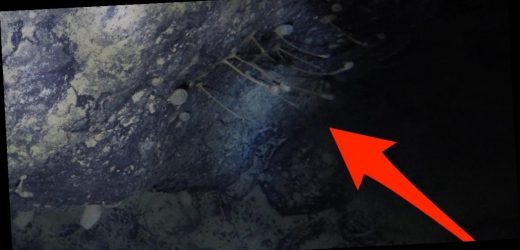- Scientists stumbled upon life under 3,000 feet of ice in Antarctica.
- They found two types of unidentified animals, where they had thought nothing could live.
- Their next step is finding a way to get close enough to identify the creatures.
- Visit the Business section of Insider for more stories.
Scientist have found life under 3,000 feet under of ice in Antarctica, challenging their assumption that nothing could live in such conditions.
The previous theory was that life couldn’t exist in such extremity: no food, freezing temperatures, and complete darkness.
The creatures were found attached to a boulder in the frigid seas under the Filchner-Ronne ice shelf. Experts from the British Antarctica Survey drilled through 2,860 feet of ice, then another 1,549 feet of water to make the discovery.
“The area underneath these ice shelves is probably one of the least-known habitats on Earth”, said Dr. Huw Griffith, one of the scientists who made the discovery, in a Twitter video.
“We didn’t think that these kinds of animals, like sponges, would be found there.”
The Filchner-Ronne ice shelf is a massive floating ice sheet which stretches out from the Antarctic continent.
It spans more than 579,000 square miles, but only the equivalent of the surface of a tennis court has been explored.
Enormous icebergs occasionally break off from these ice shelves and drift away. In December 2020, one of these icebergs threatened to crash into a breeding ground for sealions and penguins.
The scientists didn’t set out looking for life.
They were drilling through the ice sheet to collect samples from the sea floor. Instead, their camera hit a boulder. When they reviewed the camera’s footage, it revealed this discovery.
“Never in a million years would we have thought about looking for this kind of life, because we didn’t think it would be there,” Griffiths told The Guardian.
The video reveals two types of unidentified animals, shown here in a video from the British Antarctic Survey. The animals in red seem to have long stalks, whereas another type of animal, highlighted in white, looks more like a round sponge-like animal.
Other studies had looked at life under ice sheets. A few mobile animals, such as fish, worms, jellyfish or krill, could be found in that habitat.
But it was thought that the deeper and the furthest away from a light source the habitat stretched, the less likely it would be that life could be found.
Read more: Disney is shutting down the animation studio behind the ‘Ice Age’ movies. Some staffers say they’re shocked at the lack of communication and feel betrayed that its final movie won’t be released.
This is the first time that animals which are bound to a surface have been found there. The scientist say these animals are about 160 miles from the the open sea.
“Our discovery raises so many more questions than it answers, such as how did they get there? What are they eating? How long have they been there?” Griffith said in a press release.
The scientists said their next step is to understand whether these are new species.
“To answer our questions we will have to find a way of getting up close with these animals and their environment … 260 km [160 miles] away from the ships where our labs are”, Griffith said.
Life in research stations in Antarctica is not easy feat, as Insider’s Monica Humpfries reported
They are so remote that the first case of COVID-19 on the continent was only reported in December, 2020.
Source: Read Full Article


